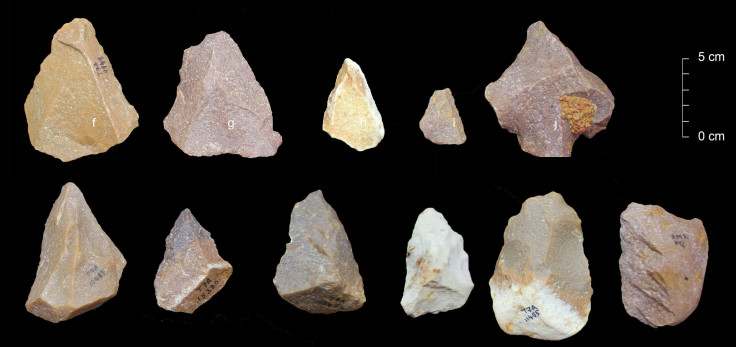Stone Tools Raise Question Of When Exactly Humans Left Africa

The history of human evolution and the timeline for when our species left Africa and dispersed around the globe is a murky subject, with newly discovered artifacts periodically calling into question what we thought we knew about our past. A set of stone tools found in India may add to the confusion.
Scientists said the tools they found were made between 385,000 years and 172,000 years ago, a timeframe that suggests humans left Africa earlier than many believe.
In a study in the journal Nature, the researchers wrote that the stone tools show a shift from the prehistoric technology of the early Stone Age, known as the Acheulean, to the technology of the mid-Stone Age — also called the Middle Palaeolithic — at the beginning of that timespan.
The progress of stone technology, which includes the production of tools, serves as a way for archaeologists to analyze migration patterns of early humans, using artifacts dug up in different parts of the world.
The new artifacts were found in southern India’s Attrambakkam, a village close to Chennai on the subcontinent’s eastern coast. The way in which they were fashioned shows that the “Middle Palaeolithic culture occurred … much earlier than conventionally presumed for South Asia,” according to the study. “Chronologies of Middle Palaeolithic technologies in regions distant from Africa and Europe are crucial for testing theories about the origins and early evolution of these cultures.”
The study suggests that others reconsider early human migration models that don’t put people into India until after 125,000 years ago.
However, the researchers point out that the tools could have been made by Neanderthals, a cousin of Homo sapiens, rather than modern humans themselves.
“We are very cautious on this point,” the authors told the AP.
Stone tools are not the only clues scientists use to learn more about when the human species left their birthplace in Africa and spread through Europe and Asia. Previous research has focused on other marks humans have left behind, like footprints permanently imprinted in rock.
In addition to the controversy over when humans first left Africa, there is a question over when they arrived in specific places, including the Americas. Different researchers have various ideas about the exact time period when that occurred, with the ancestors of today’s Native Americans crossing over a now-sunken land bridge that connected Asia and North America.
© Copyright IBTimes 2025. All rights reserved.




















